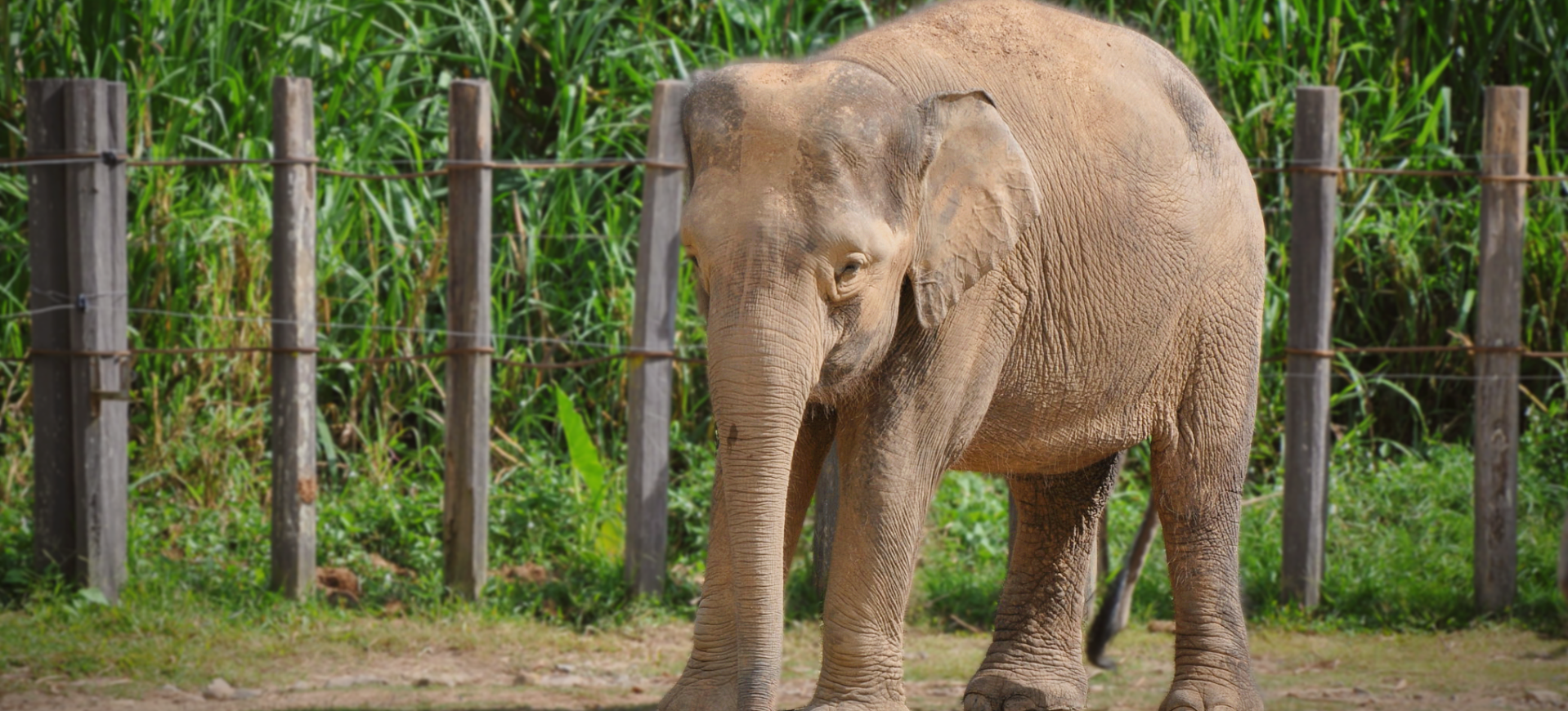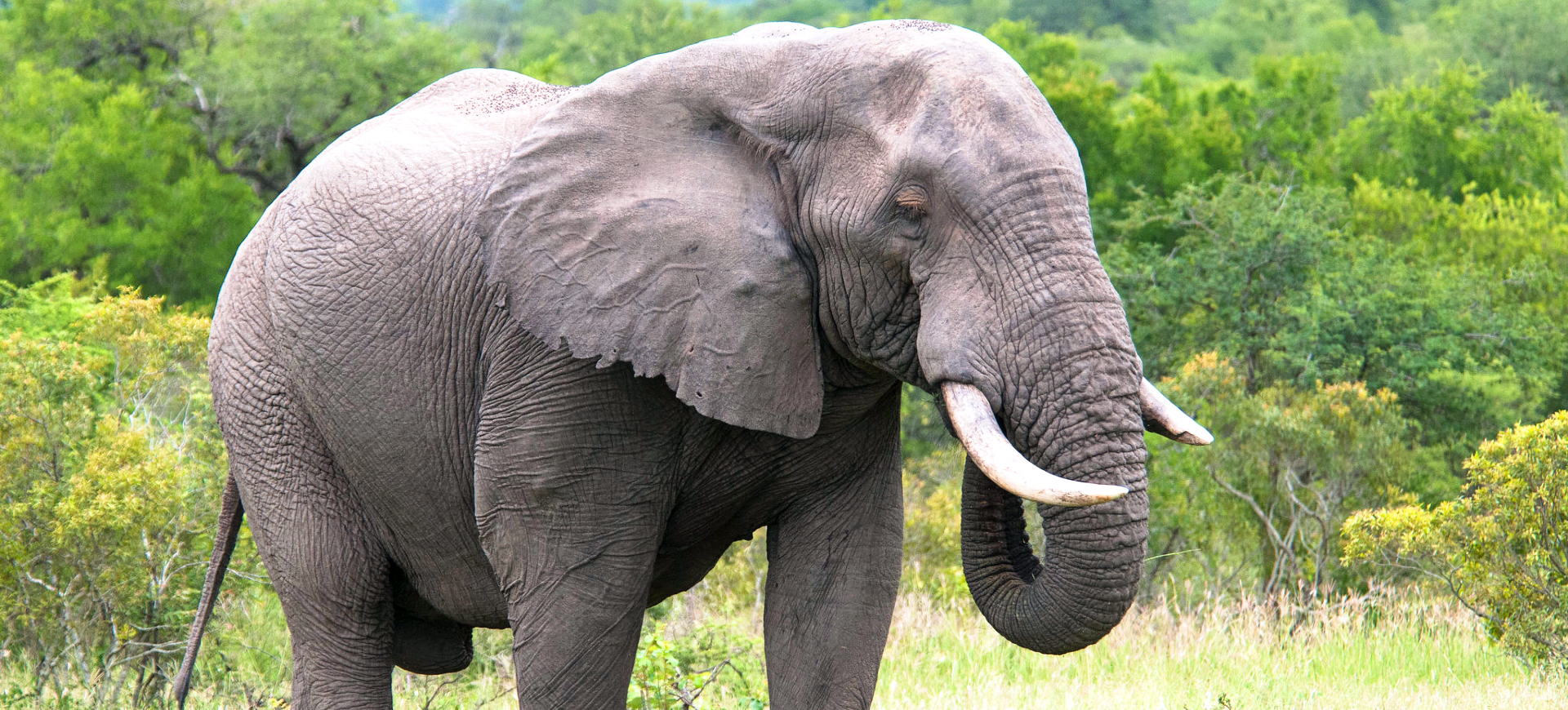Overview
The Asian elephant (Elephas maximus) is the largest land animal in Asia, found primarily in forests and grasslands across South and Southeast Asia. It is characterized by its smaller ears and rounded back compared to its African counterpart, as well as its highly social nature and complex behaviors. Asian elephants are known for their intelligence, strong familial bonds, and ability to modify their environment, playing a crucial role as ecosystem engineers. Despite their cultural significance and revered status in many Asian traditions, these elephants are endangered due to habitat loss, human-elephant conflict, and poaching.
Asian elephants exhibit sexual dimorphism, with males typically being larger and more likely to grow tusks, though some males and most females lack tusks, instead having small “tushes.” These elephants live in matriarchal groups led by an older female, with males becoming more solitary as they mature. They are migratory animals, traveling long distances to find food and water, and their presence influences the distribution of plant and animal species in their habitat. Their remarkable memory, cooperative behavior, and ability to use tools highlight their advanced cognitive abilities.
Asian elephants have been domesticated culturally for thousands of years and used for ceremonial purposes, logging, and transportation. However, their reliance on shrinking forests has led to increasing conflicts with humans, posing a significant threat to their survival. Conservation efforts focus on protecting their habitats, mitigating human-elephant conflicts, and enforcing anti-poaching laws to secure a future for this iconic species.
Taxonomy
Kingdom
Phylum
Class
Order
Family
Genus
Species
Type
Current distribution:
The Asian elephant's range includes 13 countries across South and Southeast Asia, including India, Sri Lanka, Thailand, Indonesia, and Myanmar. India hosts the largest population, with significant numbers also found in Sri Lanka, Sumatra, and Borneo. However, their distribution is increasingly fragmented due to deforestation, agriculture, and urban development. Small, isolated populations are found in pockets of protected forests and wildlife reserves.
In the wild, elephants often migrate across borders, moving through transboundary protected areas such as those between India and Nepal or Myanmar and Thailand. These migrations are essential for maintaining genetic diversity and accessing seasonal resources. However, expanding human settlements and infrastructure has led to increased human-elephant conflicts, particularly in areas where their traditional migratory routes intersect with farmland. Conservation efforts focus on creating wildlife corridors and mitigating conflicts to protect their remaining wild populations.
Physical Description:
Asian Elephants are imposing and muscular creatures, distinguishable by their gray skin, expansive ears, and dexterous trunk. Their skin is textured and thick, characterized by deep wrinkles and sparse hair, save for a tuft at the tail’s tip and light body coverage. The trunk, an extension of their upper lip and nose, serves multiple purposes ranging from feeding and drinking to critical social interactions, showcasing the adaptability and resourcefulness of these mammals.
In terms of dentition, it is usually the male Asian Elephants that sport long, curved tusks, essentially extended incisors. These tusks serve various functions, including foraging, defense, and attracting potential mates. In contrast, females and a particular group of males possess smaller, tusk-like teeth known as tushes that are much less conspicuous. Furthermore, their sizable, cushioned feet are evolved to bear their considerable weight and facilitate silent movement, making these colossal creatures surprisingly stealthy for their size.

Lifespan: Wild: ~60 Years || Captivity: ~75 Years

Weight: Male: 6,600–11,000 lbs (3,000–5,000 kg) || Female: 4,400–6,600 lbs (2,000–3,000 kg)

Length: Male & Female: 18–21 ft (5.5–6.4 m)

Height: Male: 8.5–10 ft (2.6–3 m) || Female: 7–8.5 ft (2.1–2.6 m)

Top Speed: 25 mph (40 km/h)
Characteristic:
Native Habitat:
Asian elephants are found in many habitats, including tropical and subtropical forests, grasslands, and scrublands across South and Southeast Asia. They are highly adaptable and can thrive in dense rainforests, open woodlands, and even human-dominated landscapes if there is access to food and water. These habitats often include rivers, wetlands, and other water sources essential for drinking, bathing, and thermoregulation. Elephants are known to create and maintain trails through their habitats, facilitating the movement of other species.
Asian elephants historically ranged from the Indian subcontinent to the islands of Borneo and Sumatra, but habitat loss and fragmentation have significantly reduced their distribution. They prefer areas with open spaces foraging and forested areas for shelter and shade. They are a keystone species, meaning their activities, such as clearing vegetation and spreading seeds, are vital for maintaining the health of their ecosystems. Protecting their native habitats is crucial for ensuring their survival in the wild.
WWF Biomes:
Biogeographical Realms:
Continents:
Diet:
Diet & Feeding Habits:
Asian elephants are herbivores with a diet consisting primarily of grasses, tree bark, roots, leaves, and fruits. They are non-ruminants and must consume large quantities of food daily, eating between 200–300 lbs (90–136 kg) of vegetation and drinking up to 50 gallons (190 liters) of water. Their trunks are used to grab and strip vegetation, while their tusks, when present, are used for digging or debarking trees. Elephants play a critical role in seed dispersal, as they consume fruits and excrete seeds over vast distances, aiding in forest regeneration.
Feeding occurs throughout the day, but elephants are most active in the early morning and late evening and rest during the hotter parts of the day. They roam large areas in the wild to find food and water, often following traditional migratory routes. Their large size and high food intake make them ecosystem engineers, shaping the landscape and influencing plant and animal communities. In captivity, they require a carefully managed diet to meet their nutritional needs and prevent health issues like obesity.
Mating Behavior:
Mating Description:
Asian elephants are polygynous, with dominant males mating with multiple females during the breeding season. Males enter a periodic state called “musth,” marked by elevated testosterone levels, aggressive behavior, and increased reproductive activity. During musth, males compete for access to estrous females by engaging in displays and physical confrontations. Females typically mate only once every four to five years, as they invest significant time and resources in raising a single calf.
Asian elephants have one of the longest gestation periods among mammals, lasting 18–22 months. Females usually give birth to a single calf, though twins are rare. Calves weigh around 200 lbs (90 kg) and depend highly on their mothers for the first few years of life. The matriarchal herd provides additional care and protection for the calf, with all members contributing to its upbringing.
Reproduction Season:
Birth Type:
Pregnancy Duration:
Female Name:
Male Name:
Baby Name:
Social Structure Description:
Asian Elephants demonstrate an intricate social structure that is predominantly matriarchal. Females and their offspring form tightly bonded groups known as herds, whereas adult males usually lead more solitary lives. The matriarch, often the oldest and most substantial female, assumes a leadership role within these groups. Her wealth of experience and knowledge significantly impacts the survival learning of the young, including teaching them crucial skills such as sourcing food and water, identifying threats, and navigating their complex social world.
As they grow, young males undergo a transition. During adolescence, they depart from their birth groups, a natural behavior that ensures genetic diversity within populations. Post-separation, they may form loose associations with other males, engaging in ‘bachelor herds.’ These alliances provide an environment for young males to learn, compete and establish dominance while reaching full maturity.
Groups:
Conservation Status:
Population Trend:
Based on the latest available data, the Asian elephant population is estimated to be between 40,000 to 50,000 individuals, a decrease from the previous figures. India remains the country with the most Asian elephants, having around 32,500 individuals. Other countries with significant populations include Sri Lanka (7,500), Myanmar (4,500), Thailand (3,500), Malaysia (3,000), Indonesia (1,500), Laos (1,100), Cambodia (260), Bhutan (400), China (210), Bangladesh (200), Vietnam (85), and Nepal (150).
Approximately 15,000 elephants are believed to be in captivity, many working in various fields, including entertainment. According to the International Union for Conservation of Nature (IUCN) Red List of Threatened Species, the Asian elephant continues to be classified as endangered, with the population showing a consistent downward trend.
Population Threats:
The primary threats to Asian elephants are habitat loss, fragmentation, and degradation caused by agriculture, deforestation, and urbanization. As their habitats shrink, elephants are forced into closer contact with human populations, leading to frequent human-elephant conflicts. Crop raiding by elephants often results in retaliatory killings, further endangering their populations. Poaching for ivory, skin, and other body parts remains a significant threat despite legal protections in most range countries.
Climate change exacerbates these issues by altering rainfall patterns and reducing water and food availability in their habitats. Infrastructure development, such as roads and railways, further fragments their range and increases the risk of fatal collisions. In captivity, poor welfare conditions, a lack of genetic diversity, and an overreliance on elephants for tourism and labor pose additional challenges. Addressing these threats requires coordinated efforts between governments, conservation organizations, and local communities.
Conservation Efforts:
Many strategies are being employed to safeguard the Asian Elephant population, which is integral to preserving biodiversity. A significant focus is placed on setting up and safeguarding wildlife corridors, which are vital in connecting scattered habitats and facilitating elephant movement. These actions help mitigate the detrimental effects of habitat fragmentation. Additionally, robust measures are being undertaken to alleviate human-elephant conflicts due to human encroachment into elephant territories. Strengthened anti-poaching measures form another critical component of conservation efforts, aiming to curb the illegal killing of these majestic creatures.
Several organizations play a pivotal role in these protection initiatives. The World Wildlife Fund (WWF), a global conservation organization, is actively involved in elephant preservation efforts. Additionally, Elephant Family, a UK-based international NGO, and the International Elephant Foundation work tirelessly to secure a future for elephants. These organizations spearhead conservation projects, research, and collaborate with local communities and governments to conserve the Asian Elephant and its habitat.
Additional Resources:
Fun Facts
- Asian Elephants have the longest gestation period of any mammal – almost 22 months.
- Elephants are known for their remarkable memory and intelligence.
- The trunk of an Asian Elephant has about 40,000 muscles.
- Only some male Asian Elephants have long tusks.
- Elephants use mud as sunscreen, protecting their skin from ultraviolet light.
- Elephants have large, thin ears that radiate excess heat away from the body.
- Asian Elephants are known to recognize themselves in a mirror.
- Elephants can consume up to 50 gallons of water a day.
- The Asian Elephant is the national animal of Thailand.
- In the wild, elephants spend around 16 hours a day eating.












